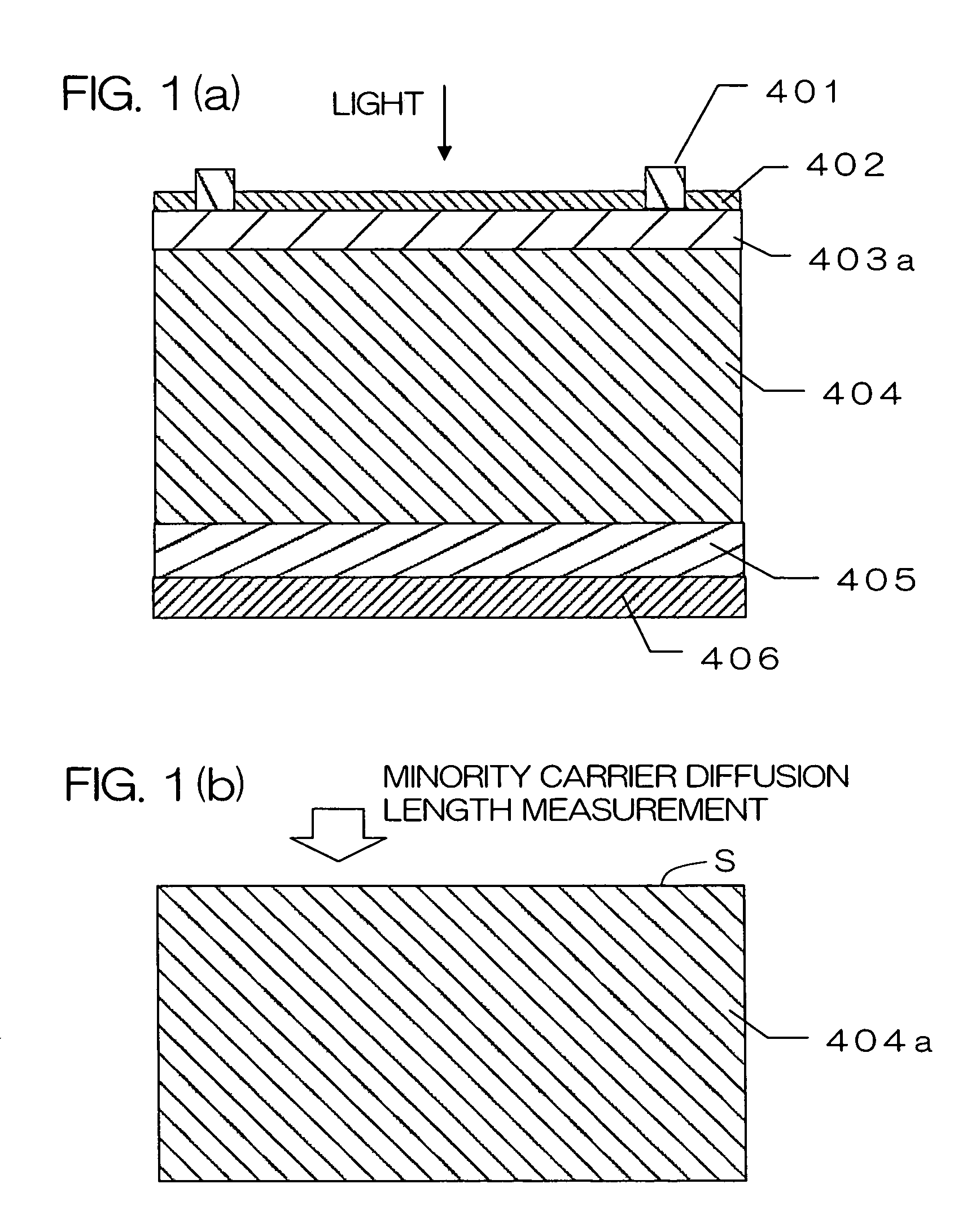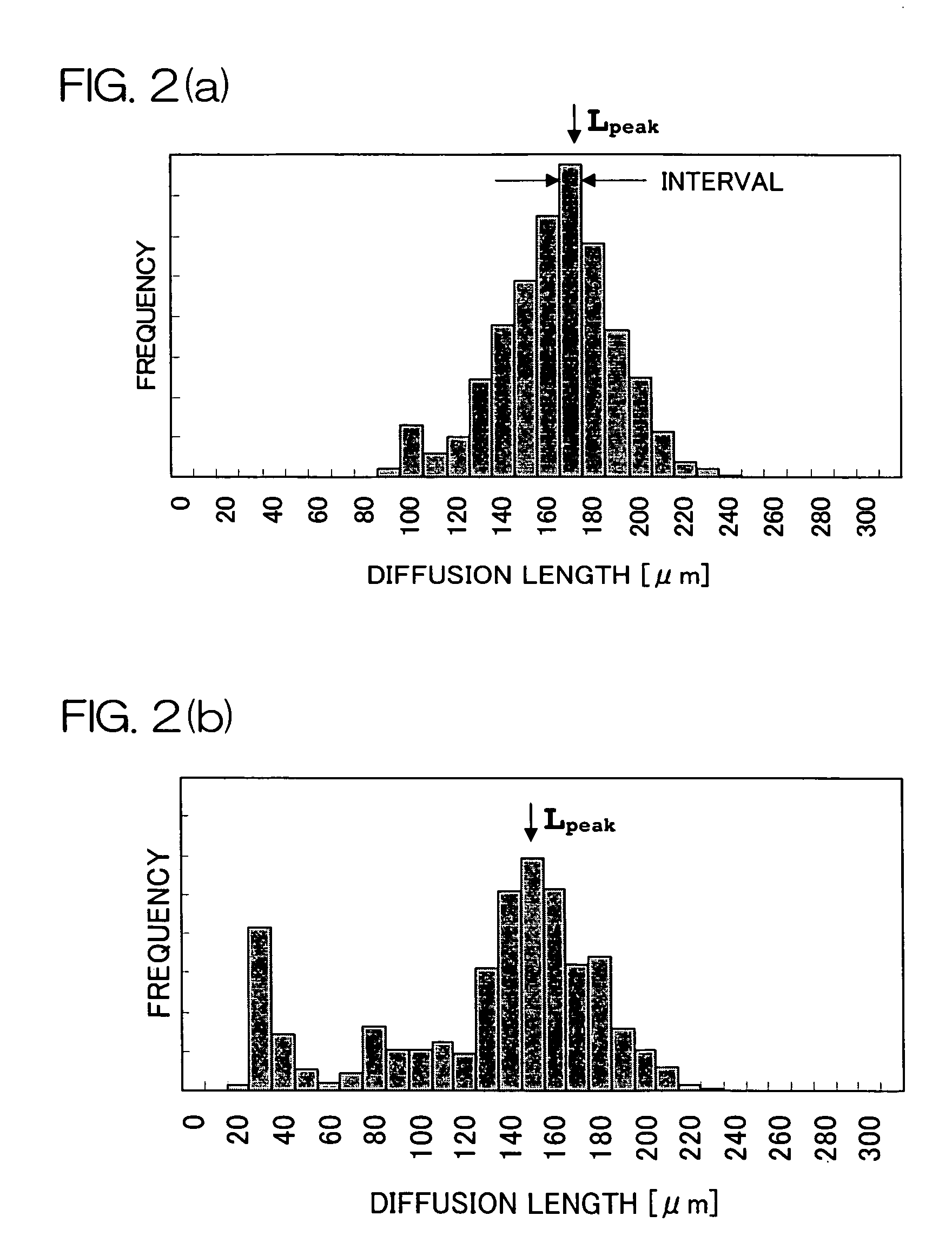Photovoltaic conversion device and method of manufacturing the device
a technology of photovoltaic conversion and manufacturing method, which is applied in the direction of radiation control devices, sustainable manufacturing/processing, and final product manufacturing, etc., can solve the problems of reducing affecting the efficiency of solar cells, and affecting the quality of crystalline silicon grains in bottom and side portions of ingots with which they are in contact, etc., to achieve high photovoltaic conversion properties, reduce the number of steps, and achieve strong gettering effect
- Summary
- Abstract
- Description
- Claims
- Application Information
AI Technical Summary
Benefits of technology
Problems solved by technology
Method used
Image
Examples
example
[0185]An advantageous effect of the present invention will be described referring to a bulk multicrystalline silicon solar cell element fabricated according to the embodiment above.
[0186]The substrate was-selected among multicrystalline silicon substrates produced by casting to be substrates shown in FIGS. 3 and 4 that have the low quality substrate peripheral regions originating from a side portion of the ingot with characteristic crystal grain configurations, which were used as the boron-doped p-type multicrystalline silicon substrate.
[0187]The dimensions of the substrate were 15 cm square and thickness thereof was 300 μm.[0188]1) Minority carrier diffusion length of the substrate before processing for a solar cell element (before application of the present invention).
[0189]First, measurements of minority carrier diffusion lengths of these multicrystalline silicon substrates (before processing) were carried out. The measurement apparatus used was a SPV apparatus (Cat. No. FAaST210...
PUM
| Property | Measurement | Unit |
|---|---|---|
| minority carrier diffusion length | aaaaa | aaaaa |
| minority carrier life time | aaaaa | aaaaa |
| temperature | aaaaa | aaaaa |
Abstract
Description
Claims
Application Information
 Login to View More
Login to View More - R&D
- Intellectual Property
- Life Sciences
- Materials
- Tech Scout
- Unparalleled Data Quality
- Higher Quality Content
- 60% Fewer Hallucinations
Browse by: Latest US Patents, China's latest patents, Technical Efficacy Thesaurus, Application Domain, Technology Topic, Popular Technical Reports.
© 2025 PatSnap. All rights reserved.Legal|Privacy policy|Modern Slavery Act Transparency Statement|Sitemap|About US| Contact US: help@patsnap.com



